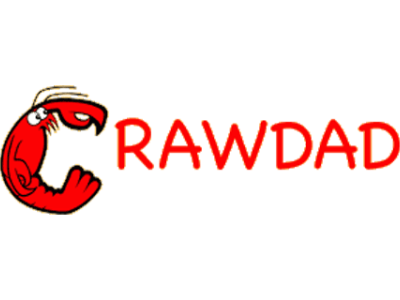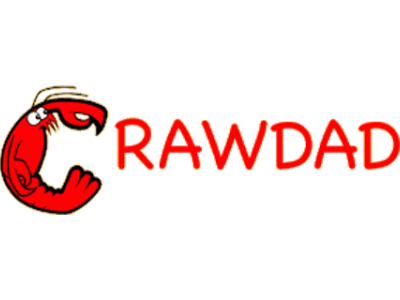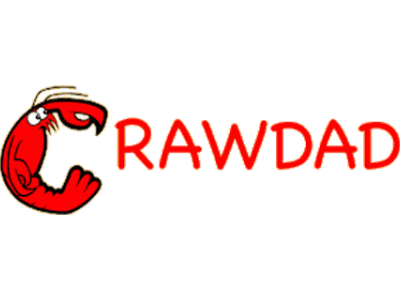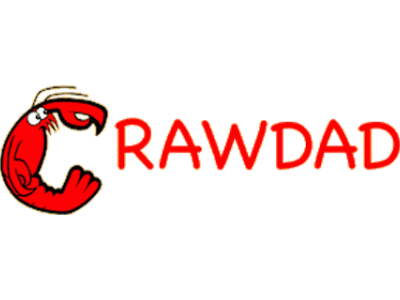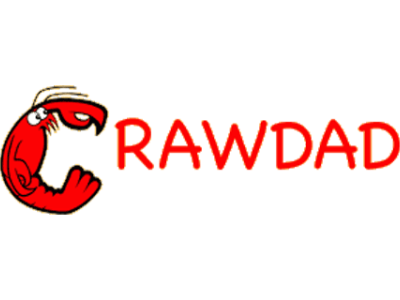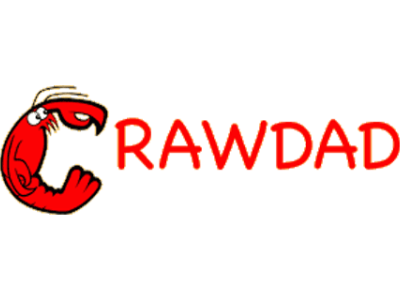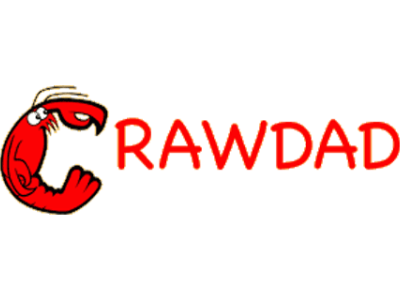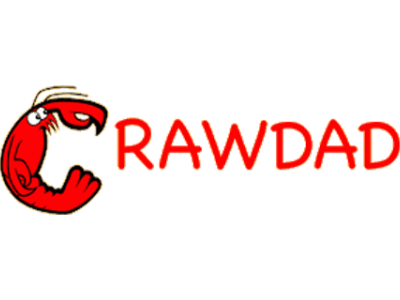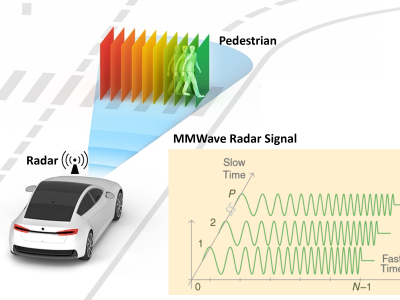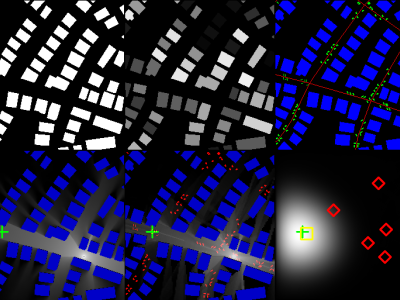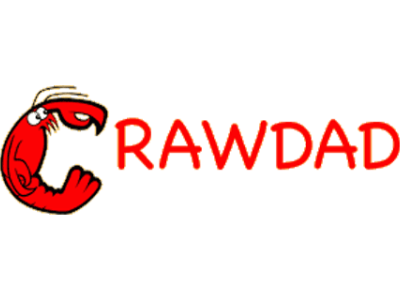CRAWDAD uw/sigcomm2004 (v. 2005-08-01)
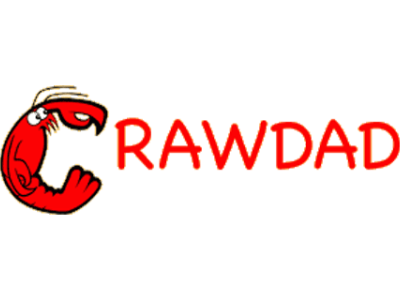
- Citation Author(s):
-
Maya Rodrig (University of Washington)Charles Reis (University of Washington)Ratul Mahajan (Microsoft Research)David Wetherall (University of Washington)John Zahorjan (University of Washington)Ed Lazowska (University of Washington)
- Submitted by:
- CRAWDAD Team
- Last updated:
- DOI:
- 10.15783/C7SW2H
 395 views
395 views
- Categories:
Abstract
Dataset of wireless network measurement in SIGCOMM 2004 conference.
Note: This dataset has multiple versions. The dataset file names of the data associated with this version are listed below, under the 'Traceset' heading and can be downloaded under 'Dataset Files' on the right-hand side of the page.
We are trying to understand how well 802.11 networks work in practice and how they can be improved. This dataset includes the traces collected by wireless monitoring and wired monitoring using tcpdump.
last modified :
2006-11-14release date :
2005-08-01date/time of measurement start :
2004-08-30date/time of measurement end :
2004-09-03collection environment :
Our trace environment is the open wireless network provided to roughly 550 participants who attended the SIGCOMM conference in Portland, Oregon from 8/30/04 to 9/03/04. We view this as characteristic of a large and busy hotspot setting. The conference took place in a hotel with a layout depicted in the collection map below (in download url section).network configuration :
A wireless network comprised of 5 APs was set up for the conference, operating in 802.11b mode1 on channels 1, 8 and 11 (even though channels 8 and 11 are not orthogonal). Internet connectivity was provided by four separate DSL access lines. AP channels are as follows (see the collection map below (in download url section) for the location of each AP): channel 1: sigcomm-nat,sigcomm-public-3,sigcomm-public-1 channel 8: sigcomm-nat-foyer channel 11: sigcomm-public-2data collection methodology :
We monitored the activity on the wireless network in two ways. The first method was wireless monitors. The second monitoring method was traditional wired traces.sanitization :
MAC addresses and IP addresses have been anonymized using a tool from CRAWDAD project. Anonymization is consistent across trace files (IP-x maps to IP-y in all of them).limitation :
1. One limitation that was beyond our control is that the SIGCOMM network was hampered by intermittent usability problems. We understand that these problems stemmed from the DHCP and DNS configurations and caused Internet connectivity to become unavailable to some clients. 2. A second limitation is that the different APs were assigned to logically different networks (with different SSIDs), such that users or their operating systems selected one AP for connectivity.Traceset
uw/sigcomm2004/wireless
Traceset of wireless monitoring.
- files: chihuahuan, kalahari, mojave, sahara, sonoran
- description: Traceset of wireless monitoring.
- measurement purpose: Network Performance Analysis
- methodology: The first method was wireless monitors. We placed five PCs, each with three Netgear WAG311 wireless adapters, near the APs. Each monitor listened on all three active channels, using external antennas which we placed at least a foot apart from each other to avoid interference. Multiple monitors were within the range of each AP to provide information on the spatial diversity of transmission and reception. We logged all observed activity using tcpdump, capturing 802.11 control and management packets as well as data packets and writing complete packets to disk. The PHY information includes a receive signal strength indicator (RSSI) and the transmission rate. The MAC information is the entire 802.11 frame header and CRC. We also customized our MADWiFi driver to log reception errors that provide information on periods when transmissions were detected but not correctly decoded. Monitor channels (primarily) are as follows: ath0=1, ath1=8, ath2=11. Exception is that the APs switched from channel 8 to channel 6 on Wednesday morning (9/1/2004); kalahari switched ath1 to channel 6 Wednesday at 12:24 pm, and sahara, chihuahuan, and sonoran switched ath1 to channel 6 Friday at 8:30 am.
- last modified: 2006-11-14
- dataname: uw/sigcomm2004/wireless
- version: 20050801
- change: the initial version
- release date: 2005-08-01
- date/time of measurement start: 2004-08-30
- date/time of measurement end: 2004-09-03
- error: 1. We used the noise field of the prism frame to encode error status of frames, so be sure to filter down to only those frames with noise values of zero. others are errored packets (corrupt or not fully received). 2. The clocks on different machines were not synchronized; chihuahuan's clock is the most accurate
- note: three of the ath2 traces (chihuahuan, mojave, and sonoran) were very large. the split command was used to break them up into 1G segments to allow sharing them online. you will need to cat the segments of each before unzipping.
uw/sigcomm2004/wireless Traces
- chihuahuan: Trace of wireless sniffer (chihuahuan).
- configuration: For hw/sw configuration, see the methodology section of the parent traceset uw/sigcomm2004/wireless. For the location of wireless sniffer, see the collection map linked in the dataset uw/sigcomm2004.
- format: tcpdump format (including Prism header). contents above the transport layer have been removed.
- description: Trace of wireless sniffer (chihuahuan).
- last modified: 2006-11-14
- dataname: uw/sigcomm2004/wireless/chihuahuan
- version: 20050801
- change: the initial version
- release date: 2005-08-01
- date/time of measurement start: 2004-08-30
- date/time of measurement end: 2004-09-03
- url: /download/uw/sigcomm2004/chihuahuan
- kalahari: Trace of wireless sniffer (kalahari).
- configuration: For hw/sw configuration, see the methodology section of the parent traceset uw/sigcomm2004/wireless. For the location of wireless sniffer, see the collection map linked in the dataset uw/sigcomm2004.
- format: tcpdump format (including Prism header). contents above the transport layer have been removed.
- description: Trace of wireless sniffer (kalahari).
- last modified: 2006-11-14
- dataname: uw/sigcomm2004/wireless/kalahari
- version: 20050801
- change: the initial version
- release date: 2005-08-01
- date/time of measurement start: 2004-08-30
- date/time of measurement end: 2004-09-03
- url: /download/uw/sigcomm2004/kalahari
- mojave: Trace of wireless sniffer (mojave).
- configuration: For hw/sw configuration, see the methodology section of the parent traceset uw/sigcomm2004/wireless. For the location of wireless sniffer, see the collection map linked in the dataset uw/sigcomm2004.
- format: tcpdump format (including Prism header). contents above the transport layer have been removed.
- description: Trace of wireless sniffer (mojave).
- last modified: 2006-11-14
- dataname: uw/sigcomm2004/wireless/mojave
- version: 20050801
- change: the initial version
- release date: 2005-08-01
- date/time of measurement start: 2004-08-30
- date/time of measurement end: 2004-09-03
- url: /download/uw/sigcomm2004/mojave
- sahara: Trace of wireless sniffer (sahara).
- configuration: For hw/sw configuration, see the methodology section of the parent traceset uw/sigcomm2004/wireless. For the location of wireless sniffer, see the collection map linked in the dataset uw/sigcomm2004.
- format: tcpdump format (including Prism header). contents above the transport layer have been removed.
- description: Trace of wireless sniffer (sahara).
- last modified: 2006-11-14
- dataname: uw/sigcomm2004/wireless/sahara
- version: 20050801
- change: the initial version
- release date: 2005-08-01
- date/time of measurement start: 2004-08-30
- date/time of measurement end: 2004-09-03
- url: /download/uw/sigcomm2004/sahara
- sonoran: Trace of wireless sniffer (sonoran).
- configuration: For hw/sw configuration, see the methodology section of the parent traceset uw/sigcomm2004/wireless. For the location of wireless sniffer, see the collection map linked in the dataset uw/sigcomm2004.
- format: tcpdump format (including Prism header). contents above the transport layer have been removed.
- description: Trace of wireless sniffer (sonoran).
- last modified: 2006-11-14
- dataname: uw/sigcomm2004/wireless/sonoran
- version: 20050801
- change: the initial version
- release date: 2005-08-01
- date/time of measurement start: 2004-08-30
- date/time of measurement end: 2004-09-03
- url: /download/uw/sigcomm2004/sonoran
uw/sigcomm2004/tcpdump
Traceset of wired sniffer.
- files: greatvictoria-eth0.gz
- description: Traceset of wired sniffer.
- measurement purpose: Network Performance Analysis
- methodology: The second monitoring method was traditional wired traces, collected using tcpdump on the network segment connected to the APs. This provides a view of packets exchanged between the APs and the Internet.
- last modified: 2006-11-14
- dataname: uw/sigcomm2004/tcpdump
- version: 20050801
- change: the initial version
- release date: 2005-08-01
- date/time of measurement start: 2004-08-30
- date/time of measurement end: 2004-09-03
uw/sigcomm2004/tcpdump Traces
- greatvictoria: Trace of wired sniffer (greatvictoria).
- configuration: For hw/sw configuration, see the methodology section of the parent traceset uw/sigcomm2004/tcpdump. For the location of wireless sniffer, see the collection map linked in the dataset uw/sigcomm2004.
- format: tcpdump format (wired). contents above the transport layer have been removed.
- description: Trace of wired sniffer (greatvictoria).
- last modified: 2006-11-14
- dataname: uw/sigcomm2004/tcpdump/greatvictoria
- version: 20050801
- change: the initial version
- release date: 2005-08-01
- date/time of measurement start: 2004-08-30
- date/time of measurement end: 2004-09-03
- url: /download/uw/sigcomm2004/greatvictoria-eth0.gz
Instructions:
The files in this directory are a CRAWDAD dataset hosted by IEEE DataPort.
About CRAWDAD: the Community Resource for Archiving Wireless Data At Dartmouth is a data resource for the research community interested in wireless networks and mobile computing.
CRAWDAD was founded at Dartmouth College in 2004, led by Tristan Henderson, David Kotz, and Chris McDonald. CRAWDAD datasets are hosted by IEEE DataPort as of November 2022.
Note: Please use the Data in an ethical and responsible way with the aim of doing no harm to any person or entity for the benefit of society at large. Please respect the privacy of any human subjects whose wireless-network activity is captured by the Data and comply with all applicable laws, including without limitation such applicable laws pertaining to the protection of personal information, security of data, and data breaches. Please do not apply, adapt or develop algorithms for the extraction of the true identity of users and other information of a personal nature, which might constitute personally identifiable information or protected health information under any such applicable laws. Do not publish or otherwise disclose to any other person or entity any information that constitutes personally identifiable information or protected health information under any such applicable laws derived from the Data through manual or automated techniques.
Please acknowledge the source of the Data in any publications or presentations reporting use of this Data.
Citation:
Maya Rodrig, Charles Reis, Ratul Mahajan, David Wetherall, John Zahorjan, Ed Lazowska, CRAWDAD dataset uw/sigcomm2004 (v. 2005‑08‑01),
https://doi.org/10.15783/C7SW2H, Aug 2005.


